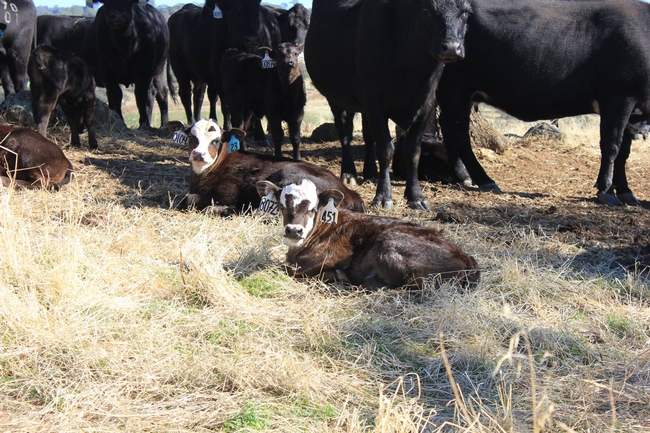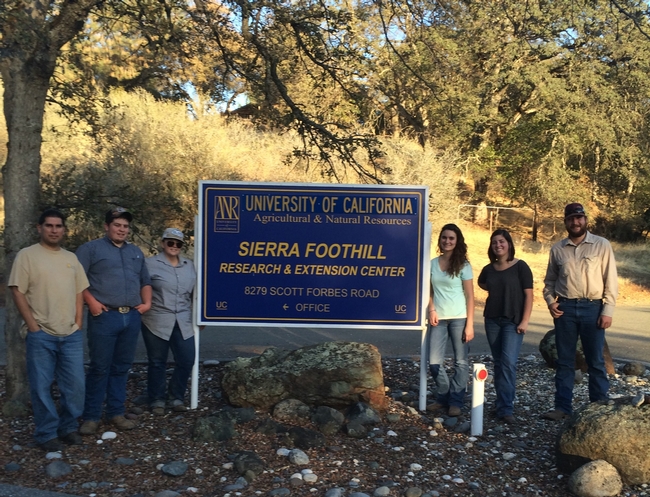Cows enjoying the wet brewers grain.
Researchers in the College of Agriculture at CSU, Chico in collaboration with Sierra Nevada Brewing Company (Chico, CA), UC Cooperative Extension agents, Glenn Nader and Josh Davy, and the Sierra Foothill Research and Extension Center (SFREC) are working to determine the effect of supplementing nursing cows with either WBG or molasses tubs on cow body condition, reproduction, and calf performance.
Cows and calves from the study group.
The third and final supplement study will begin this November at SFREC; however, preliminary results indicate that WBG is an efficient source of protein for cows grazing winter annual rangeland. In addition to investigating this important nutritional interaction, this collaboration has provided an excellent outdoor classroom for Chico State students pursuing a degree in animal science and land resource management. Students are able to gain hands-on research experience by helping to collect animal performance data as well as vegetation samples from the pastures where the cows are grazing.


